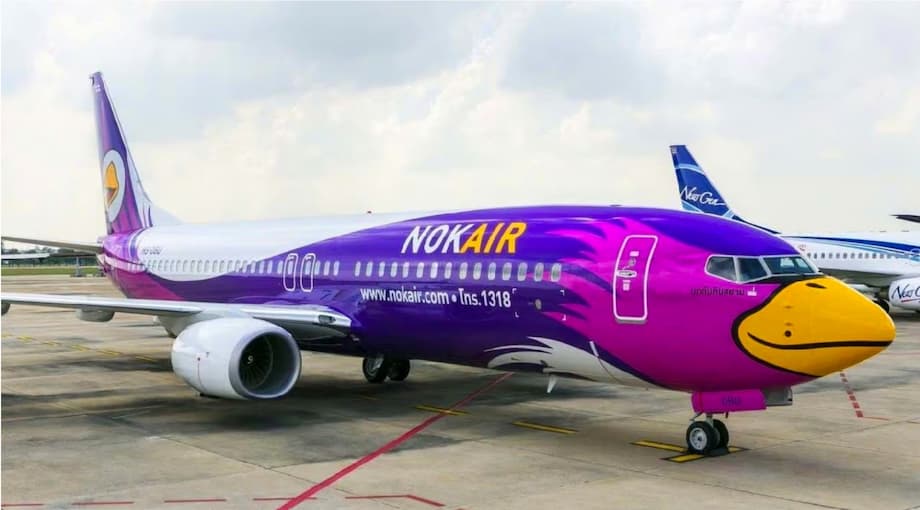What triggered the suspension
Thailand’s aviation regulator has ordered Nok Air to halt all international flights after a series of safety issues raised alarms over the past two years. In a letter dated August 25, 2025, the Civil Aviation Authority of Thailand, or CAAT, directed the Bangkok based carrier to suspend international operations and freeze any expansion until deficiencies are fixed. The order arrives during an International Civil Aviation Organization audit of Thailand’s safety oversight system, a review that is scheduled to run through September 8. Nok Air has said its domestic flights continue as planned, but any growth in the network is on hold. The airline had not flown its five seasonal international routes since June, citing the off season for China and India travel. The regulator’s new directive means those services cannot return until CAAT is satisfied that risks are addressed and root causes are understood.
What incidents are under scrutiny
Regulators cited multiple types of events, including engine shutdowns in flight, hard landings, runway excursions, and tail strikes. A key case occurred on January 8, 2024, on a flight to Nanning, China. The jet landed safely on one engine, which is a scenario commercial aircraft are designed to handle. The engine was then removed and replaced. That decision complicated a detailed root cause analysis, which CAAT still wants to see. The regulator is seeking evidence that the airline’s safety management system can identify hazards, quantify risk, and implement durable fixes. Hard landings and tail strikes, while not rare in global aviation, can point to issues in training, approach profiles, or operational discipline. Runway excursions, including a well known event in heavy rain at Chiang Rai in 2022, test an airline’s standards for dispatch, braking planning, and go around decisions.
In a letter and public comments, CAAT Director General Air Chief Marshal Manat Chavanaprayoon described the trend line that prompted the action and set the tone for the review now underway.
Manat said the rate of incidents over the past two to three years has been significant, including engine in flight shutdowns, runway excursions, hard landings, and tail strikes.
The regulator also flagged staff turnover. Reports from Thai and aviation media point to resignations among pilots, flight instructors, and appointed inspectors. CAAT linked this churn to possible pressure on safety culture and the risk of gaps in experience and oversight. The concern is not only about headcount. It is about whether enough qualified personnel are in place to run line operations, conduct training and checks, and maintain strong internal oversight.
How this affects travelers and routes
Nok Air’s international footprint is small, but in peak season it matters. The airline typically serves three cities in China and two in India from Bangkok Don Mueang. With the new order, those routes remain idle beyond the usual off season pause. Passengers who planned to use Nok Air for travel to China or India now need alternatives or refunds. The airline said domestic flights are operating normally, and it remains in close contact with CAAT while it prepares a formal response.
Travelers are shifting to other carriers on the same corridors. Thai Airways, Thai AirAsia, and Bangkok Airways are among the main substitutes, according to travel industry reports. That shift can push up prices if demand concentrates on fewer seats. Anyone holding a Nok Air booking should contact the airline or their travel agent for rebooking or refunds. Check the fare conditions on your ticket, and keep documentation of any messages from the airline. If you used a credit card, the card issuer may offer protections if services are not provided. Timing is important because seats on remaining flights can sell quickly when capacity is tight.
Inside Thailand, Nok Air continues to connect high demand domestic cities such as Krabi, Udon Thani, and Chumphon. CAAT’s order, however, bars any new routes or additional frequencies until safety shortcomings are addressed. That means the domestic schedule may be stable for now, but it will not grow until the regulator declares the corrective actions complete.
Nok Air response and safety posture
Nok Air Chief Executive Wutthiphum Jurangkool said the airline is preparing a detailed reply to the regulator and believes the restrictions can be lifted within about one month. He said the company follows maintenance manuals approved by CAAT, has passed the IATA Operational Safety Audit, and is working with Boeing and software providers that monitor pilot operations. He also emphasized that the airline had paused international flights in June for seasonal reasons and that domestic services continue under close regulator oversight.
Wutthiphum said: ‘In our 21 years of operation, Nok Air has never had a fatal accident. The engine issue on the flight to Nanning was resolved, and the aircraft landed safely. The engine was removed and replaced. We remain committed to the highest safety standards and to improving service quality.’
He argued that pilot and instructor departures reflected hiring by a competitor that operates the same Boeing 737 type, not a degradation of safety culture. He added that average monthly pilot flying at Nok Air sits around 60 to 70 hours, which is well below the 90 hour regulatory cap. The airline says its workforce remains qualified and that training meets CAAT and ICAO standards. The company has told media it will submit a corrective plan swiftly and continue coordination with CAAT and other agencies.
Staffing, safety culture and airline oversight
Personnel changes matter in aviation because safety depends on experience, training, and consistent application of procedures. Airlines rely on instructors, line check pilots, and internal inspectors to maintain standards. When many leave in a short period, it can strain training pipelines and increase the workload on those who remain. CAAT has warned that this can raise the risk that some duties are performed by people who lack specific knowledge or depth of experience. That, in turn, can show up in event data and raise the likelihood of incidents such as tail strikes or approach instability.
Safety culture is a daily practice, not a slogan. Strong teams encourage reporting of hazards without fear, analyze errors honestly, and correct issues before they turn into accidents. Effective safety management systems include trend monitoring, simulator sessions that rehearse rare scenarios, and targeted refreshers for procedures that are not used often. Airlines also try to stabilize rosters so crews are well rested and familiar with each route. The fixes CAAT is seeking from Nok Air are likely to touch all these elements, from additional training modules to crew resource management, and from maintenance troubleshooting to runway performance planning.
Why timing matters for Thailand’s aviation system
The ICAO safety audit now underway examines a state’s capacity to oversee safety. It looks at laws and regulations, organization and staffing, licensing of crews and engineers, oversight of airline operations and airworthiness, and accident investigation capability. The focus is on the regulator, not individual airlines, but the way a regulator acts on specific cases is a visible part of the picture. Strong enforcement signals that the authority identifies risk and requires corrective action in a timely way.
Thailand has been working to strengthen aviation oversight since a downgrade by the U.S. Federal Aviation Administration in 2015. Aviation industry reporting this year indicates Thailand has since returned to FAA Category 1 status, which allows Thai carriers to operate to the United States. Sustaining that rating depends on credible safety oversight at home. The Nok Air case lands during an ICAO review, so CAAT is under pressure to secure clear documentation of fixes and verify effectiveness before allowing a resumption of international flights.
Background on Nok Air operations and fleet
Nok Air began flying in 2004 and is based at Don Mueang in Bangkok, with additional activity from Chiang Mai and Phuket. The company is a budget carrier with a domestic focus. Its website and schedules reflect direct flights to about 18 Thai cities. The international network is modest and seasonal, usually three destinations in China and two in India during peak months. The current fleet is reported as 14 Boeing 737-800 aircraft with an average age a little above 11 years. These workhorse jets are common across Asia and are well understood by maintenance providers and regulators.
The brand has navigated several rough patches. In July 2022, a Nok Air 737 exited the runway during heavy rain at Chiang Rai. There were no fatalities, but the airport closed for many hours while crews cleared the jet, and the incident drew intense scrutiny. The airline has also dealt with pilot shortages and cancellations during the travel rebound after the pandemic. A separate long haul joint venture, NokScoot, ended operations in 2020. With the latest CAAT directive, any plan to rebuild or expand international flying will wait until the safety case is fully accepted by the regulator.
What happens next
CAAT has asked for rapid corrective action. Reports indicate the airline has about one week to submit a plan that satisfies several core concerns. The list is likely to include a documented root cause analysis for engine shutdown events, updates to risk assessments and mitigations, and proof of training currency for flight crews and instructors. The authority will also want to see staffing plans that restore depth in key roles, and evidence that runway excursion and tail strike prevention actions are in place and working. Simulator checks and proficiency reviews may form part of that package. The airline says it is coordinating with the regulator and industry partners to address the gaps.
Once the plan is submitted, CAAT will assess whether the fixes are specific, measurable, and durable. Only then will the authority consider lifting the suspension on international routes. Nok Air’s chief executive says he is confident restrictions can be removed within a month. That timeline will depend on how convincing the evidence is and on the outcome of the broader ICAO audit. For travelers, the practical advice is to follow airline announcements, monitor regulator notices, and do not delay in securing alternatives if you need to fly to China or India in the coming weeks.
Quick Facts
- CAAT ordered Nok Air on August 25, 2025 to suspend all international flights and halt network expansion.
- The regulator cited incidents from 2023 to 2025, including engine shutdowns in flight, hard landings, runway excursions, and tail strikes.
- Nok Air had already paused international routes in June 2025 for seasonal reasons, but the order blocks any restart.
- Domestic flights continue, yet the airline cannot add new routes or frequencies until safety fixes are accepted.
- CAAT highlighted staff resignations among pilots, instructors, and inspectors as a risk to safety culture and oversight.
- An ICAO safety audit of Thailand’s oversight system is running from August 27 to September 8, 2025.
- Nok Air’s CEO says the airline has IOSA certification and is working with CAAT and Boeing, aiming to lift restrictions within about a month.
- The carrier operates 14 Boeing 737-800 aircraft and focuses on domestic service from Bangkok Don Mueang.
- Travelers can switch to Thai Airways, Thai AirAsia, or Bangkok Airways for China and India routes and should request rebooking or refunds from Nok Air.
- CAAT will decide on resumption of international flights after reviewing Nok Air’s corrective action plan and evidence of risk control.




